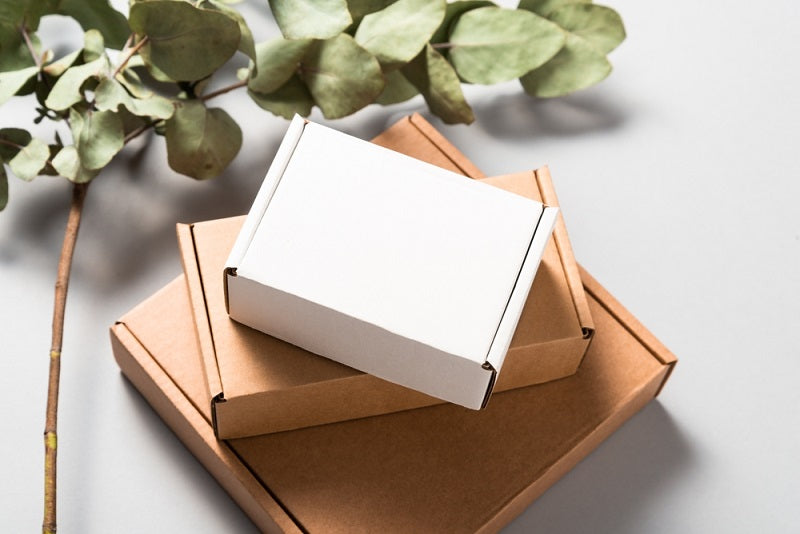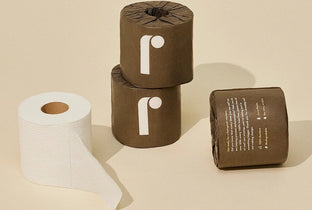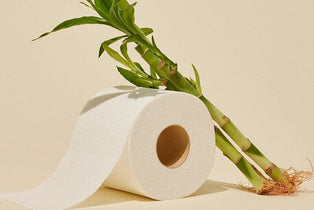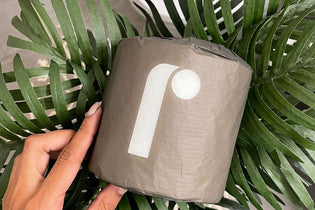
TLDR
We all love to see it: The delivery van pulling up to deliver your latest online purchase. It might be groceries, or that fantastic pair of shoes you splurged on, but one thing is for sure—in too many instances, it’s coming to you wrapped in layers of plastic.
The EPA estimates that traditional packaging waste accounts for 82.2 million tons of garbage in the U.S. per year.1 It’s a daunting problem, but if you’re a business owner, it’s also an opportunity. The packaging you select for your product can make a major impact in reducing post-consumer waste.
Luckily, the options for eco-friendly packaging materials are more plentiful than ever before. Keep reading to learn about eight sustainable packaging material options and how you can put them to work for your business.
What Materials are Eco-Friendly?
The question is more complicated than it might seem. There’s no strict definition for the term “eco-friendly,” and it may take on different meanings for different people.
Unfortunately, some companies are taking advantage of this wiggle room by “greenwashing,” or marketing a product as sustainable to take advantage of consumer demand for earth-friendly products.2
Genuine environmentally friendly packaging material should check some or all of these boxes:
- It’s sustainable and renewable – Think of fast-growing plants, like bamboo, hemp, corn, and seaweed. Wood is renewable, but to combat deforestation it’s best to avoid virgin paper and opt for recycled material instead.2
- It’s eligible for curbside recycling – Many packaging materials are labeled as recyclable but require specialized facilities. If an item can’t be tossed in the general recycling bin, it’s not likely to be recycled at all.3
- It truly biodegrades – We’ll explore this in more detail below, but biodegradable doesn’t always mean what we think it does. True biodegradability means breaking down quickly into non-toxic particles that can safely reenter the environment.4
- Bonus points if it’s compostable – Recycling is a crucial piece of sustainability, but it also comes with some problems, including fossil fuel and water consumption.3 Materials that can be composted either at home or in municipal composting programs are sometimes a more eco-friendly choice.
8 Types of Eco-Friendly Packaging Materials
Now that we’ve talked a bit more about what terms like eco-friendly and biodegradable mean, let’s delve into some of the best eco-friendly packaging solutions that live up to the hype!
#1 Recycled Packaging
Recycled packaging materials are one of the best solutions for businesses looking for eco-friendly alternatives. Recycled paper and cardboard are especially good choices from both a business and an environmental perspective. They are lightweight, inexpensive, and can fit a variety of design aesthetics from homespun to high-end.
Plus, post-consumer recycled content like paper, aluminum, and cardboard are simple to recycle. Facilities exist in almost every community, and they can be 100% recycled up to seven times.5
#2 Compostable Packaging
Compostable options for packaging range from shipping tape and mailer bags, to food packaging and label stickers. Compostable packaging breaks down rapidly (within weeks to months), leaving behind safe, nutrient-rich humus that can contribute to fertile soil.4
Compostables may be made from renewable sources like sugarcane or corn, but they may also be created using fossil sources. As such, not all compostables are equally environmentally friendly.6 What’s more, home compost isn’t always sufficient to break down compostables.
If you opt for compostables, be sure to:
- Check the source material
- Ensure it’s suitable for home composting
#3 Corn Foam Packaging
Many businesses fall back on polystyrene, or Styrofoam, as an easy packaging solution. It’s inexpensive, lightweight, and can protect even the most fragile items. But it also wreaks havoc on the planet. It can’t be recycled, and it takes hundreds of years to break down.7
But there’s a new option on the scene: Corn foam. Made of cornstarch, it provides all the cushioning and shock absorbency of polystyrene but it also biodegrades easily and fully. You can put it in your compost or simply dissolve it in water.8Another attractive perk? It doesn’t leave harmful chemical residues.
Corn foam is available in a variety of forms: blocks, tubes, packing peanuts, and more.

#4 Corrugated Bubble Wrap
Corrugated “bubble” wrap is a fully compostable, 100% recycled alternative to traditional plastic bubble wrap. While it might not be satisfyingly poppable, it still provides an inexpensive, effective layer of cushioning that forms to your product.
It’s accepted in nearly any recycling facility, making it easy for consumers to recycle, and the fibers can be reused over and over9. It’s also simple and safe to compost at home.10
#5 Glassine Bags
A beautiful alternative to polybags, glassine paper bags are compostable and eligible for curbside recycling.11 They’re also nontoxic and water- and grease-resistant, so they’re a popular choice for the food service industry. With their translucent sheen and smooth texture, glassine bags can provide a luxe feel to product packaging for everything from clothes or candles to fine art prints.
Glassine is rarely made from recycled paper, so look for FSC certification to ensure the wood was sourced from responsibly managed forest.11
#6 Mushroom Packaging
Mushrooms aren’t just a pizza topping anymore! As another alternative to polystyrene, mushrooms are being used to create custom forms to securely pack everything from handicrafts to furniture. Even major retailers like Ikea are jumping on the trend.12
The forms are created from a mixture of hemp or corn husk fibers and mycelium, the branching “roots” of a fungus.12 The mycelium is grown over a few days, then dried to stop the growing process.
Once the consumer has unpacked their product, they can simply toss the packaging into the compost, where it will quickly and completely decompose.
#7 Seaweed Film
One of the newest innovations on the packaging scene is thin, flexible wrappers or bags made from seaweed. Seaweed packaging is fully biodegradable—sometimes even edible. It can be made in a variety of colors, and has a translucent appearance similar to waxed paper.
Completely non-toxic and additive-free, seaweed film is ideal for food packaging. It’s also being used to wrap items like soaps and personal hygiene products. Some forms dissolve quickly in water, and others biodegrade over a longer period.13
#8 Cellulose Film
If you’re looking for a sustainable alternative to a plastic bag that still offers many of the same features, cellulose film may be the answer. Cellulose is made from renewable, plant-based sources like wood and cotton. It’s often used in food packaging for its moisture-resistant and air-tight properties.
The film can be clear, colored, or even metallic. It also prints well, so you can create custom packaging for your brand. Best of all, it’s biodegradable and compostable without special facilities.14
With these packaging materials in mind, let’s dive deeper into biodegradation to help you determine the most sustainable choice for your brand.

Are All Eco-Friendly Products Biodegradable?
Like eco-friendly, “biodegradable” is another term with a vague definition. Everything breaks down eventually, even plastics.15 The question is, how long does it take, and what’s left behind?
When you imagine a material biodegrading, you might picture something like a time-lapse video: a sheet of paper breaking down in the sun and rain, being eaten by earthworms, and finally melting away into the soil. (Finish with a daisy springing up for good measure.)
In an ideal scenario, biodegradation should happen fairly quickly (within weeks to months, not years).15 And it shouldn’t leave any harmful residues to be absorbed back into our soil.
What To Look For Beyond the Biodegradable Buzzword
All things considered, biodegradable products can certainly be a terrific choice. But before you opt for that fancy bioplastic packaging, consider:15
- What is the source material?
- How long does it take to break down?
- Can it be composted at home?
- Does it require special facilities to biodegrade?
Why Choose Eco-Friendly Packaging?
Besides being the right choice for the environment, sustainable packaging is a wise move for your business. According to one study,16 66% of consumers take sustainability into account when shopping. Millennials responded even more strongly—75% said they consider sustainability when buying.16
Businesses that make greener options convenient and accessible can position themselves as modern, aware, and friendly to both the consumer and the planet.
Make Sustainability Simple By Reaching for Reel Paper
The perfect packaging will help you stand out, protect your products, and still put the planet first. By showing that your business is in the fight against climate change, you’ll build trust with your consumers and benefit from the growing demand for more sustainable options.
At home, you can also make small changes without changing your lifestyle, simply by opting for sustainable products like 100% recycled paper towels and eco friendly tissues.
With Reel Paper, you can rest assured you’re getting 100% plastic- and tree-free paper products that help keep our forests full for generations to come.
Sources:
- United States Environmental Protection Agency. Containers and Packaging: Product-Specific Data. https://www.epa.gov/facts-and-figures-about-materials-waste-and-recycling/containers-and-packaging-product-specific
- EcoCult. Where Are All the Great Sustainable Packaging Options? https://ecocult.com/sustainable-eco-friendly-zero-waste-biodegradable-compostable-packaging
- Columbia Climate School. Recycling in the US is Broken. How Do We Fix It? https://news.climate.columbia.edu/2020/03/13/fix-recycling-america/
- The Balance Small Business. What “Biodegradable” Really Means. https://www.thebalancesmb.com/what-does-biodegradable-mean-2538213/
- Green Business Bureau. 10 Eco-Friendly Packaging Alternatives for Your Business’s Shipping Needs. https://greenbusinessbureau.com/green-practices/products/packaging/8-eco-friendly-packaging-alternatives-for-your-businesss-shipping-needs/
- Institute of Food Technologists. The Complexities of Compostable Food Packaging. https://www.ift.org/news-and-publications/food-technology-magazine/issues/2019/october/columns/packaging-complexities-of-compostable-food-packaging/
- Colgate University. Styrofoam: Why it is harmful, and alternatives. http://blogs.colgate.edu/sustainability/2011/11/10/styrofoam-why-it-is-harmful-alternatives/
- Food and Wine. Foam Packaging That Dissolves in Your Sink Is the Next Big Thing. https://www.foodandwine.com/news/green-cell-foam-packaging-sink/
- Progressive Grocer. 7 Best Practices for Eco-Friendly Packaging. https://progressivegrocer.com/7-best-practices-eco-friendly-packaging/
- Gardening Know How. Composting Cardboard: Information On Types Of Cardboard To Compost Safely. https://www.gardeningknowhow.com/composting/ingredients/composting-cardboard.htm
- Citizen Sustainable. Are Glassine Bags Eco Friendly? 11 Most Common Questions Answered. https://citizensustainable.com/glassine-bags/
- Global Citizen. Ikea is Switching to Biodegradable Packaging Made From Mushrooms. https://www.globalcitizen.org/fr/content/mushroom-fungi-packaging-ikea-decompose-ecovative
- Greenbiz. This edible packaging will make you reconsider seaweed. https://www.greenbiz.com/article/edible-packaging-will-make-you-reconsider-seawee
- PR Newswire. Cellulose Film Packaging Market is Estimated to Grow at a CAGR of 4.9% During 2018 - 2028. https://www.prnewswire.com/news-releases/cellulose-film-packaging-market-is-estimated-to-grow-at-a-cagr-of-4-9-during-2018-20
- Columbia Climate School. The Truth About Bioplastics. https://news.climate.columbia.edu/2017/12/13/the-truth-about-bioplastics/
- Business News Daily. Most Consumers Want Sustainable Products and Packaging. https://www.businessnewsdaily.com/15087-consumers-want-sustainable-products.html/
- Pacific Standard. Researchers Find 'startling' Amounts Of Plastic In The Bodies Of Sea Turtle Hatchlings. https://psmag.com/environment/baby-sea-turtles-are-full-of-plastic/
- Packaging Revolution. How Global Trends Are Shaping the Urgency for Reusable Packaging Systems. https://packagingrevolution.net/how-global-trends-are-shaping-the-urgency-for-reusable-packaging-systems/
- 28




0 comments